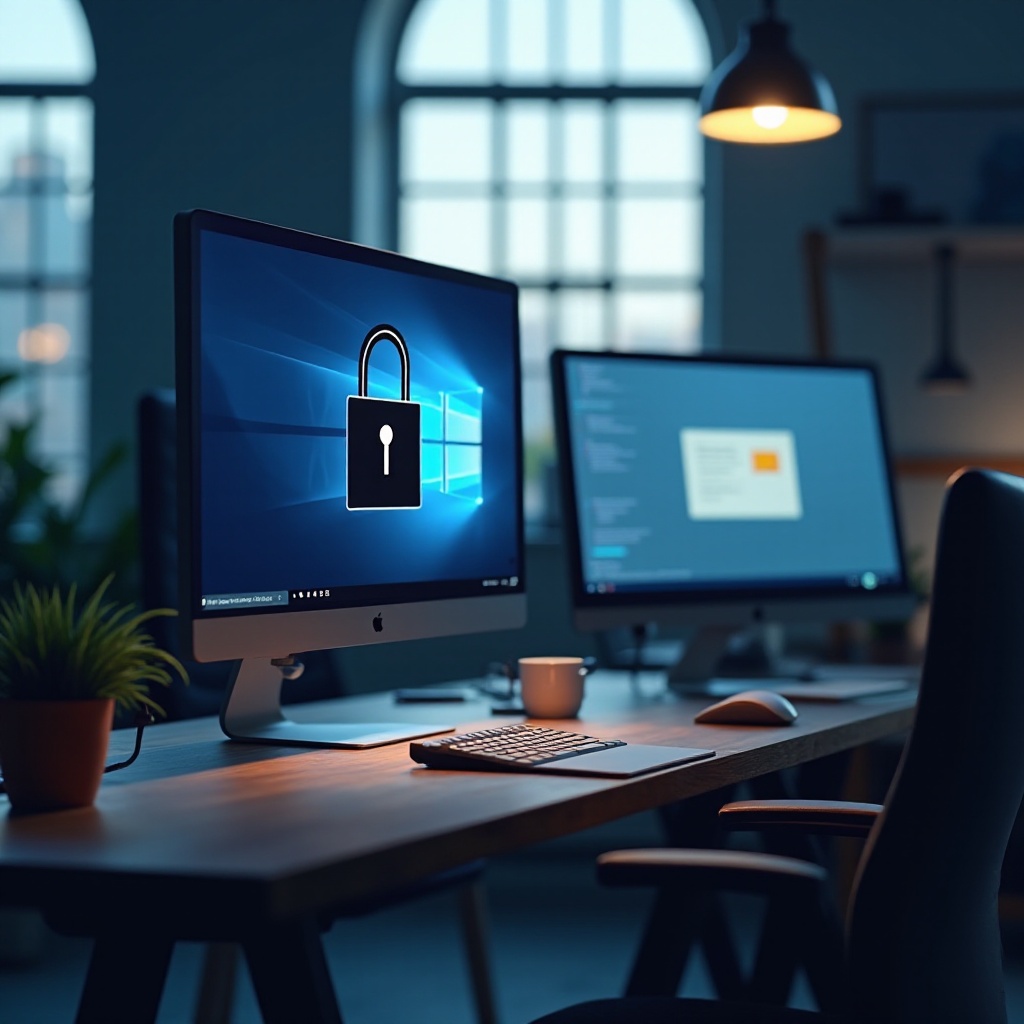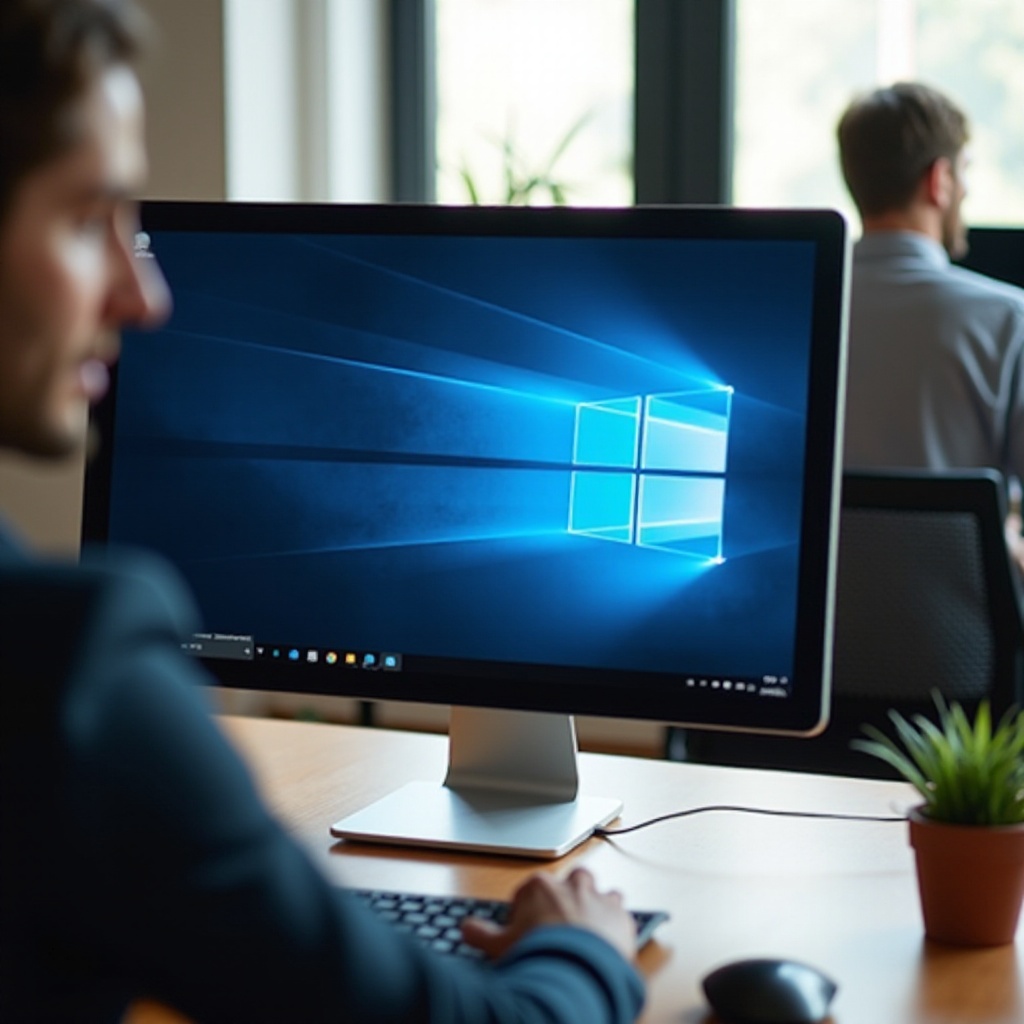Introduction
Imagine this: you’re deep into your work, and suddenly, your Windows system goes to the lock screen without warning. This unexpected behavior is not just a minor inconvenience—it can interrupt your productivity significantly. To combat this, understanding what causes these random lock screen activations is essential. By exploring various factors like power settings, software issues, and potential conflicts, we can help you minimize disruptions and maintain a smooth computing experience.

The Purpose of the Windows Lock Screen
The Windows lock screen acts as a protective barrier for your device, displaying notifications and information while awaiting user authentication. Its primary aim is to keep your system secure from unauthorized access when you’re absent. However, when the lock screen appears unprovoked, it steps beyond its intended function, affecting your workflow. By dissecting the purpose and functionality of the lock screen, we can pinpoint why it might be activating unexpectedly.
Understanding its role helps you gain insight into addressing the behavior that disrupts users and productivity.

Identifying Causes of Random Lock Screen Activations
Recognizing the factors leading to the lock screen’s sudden appearance is crucial in resolving the problem. Let’s dive into some common causes and how you can tackle each.
Optimizing Power and Sleep Settings
Your Windows system may lock randomly due to your power and sleep preferences being set to activate too quickly after periods of inactivity. Initiating the lock screen is a device’s way to conserve energy, but too short a setting can be annoying. Reviewing these settings provides a straightforward first step in troubleshooting.
Investigating Software and Driver Complications
Sometimes, outdated software or driver inconsistencies cause the lock screen to appear unprompted. These issues can mimic idleness or signal an error to your system. Ensuring your software and drivers are current can resolve many such problems.
Conflicts with Third-Party Applications
Third-party applications may sometimes interfere with lock screen behavior. Programs influencing power options, screensavers, or system security are potential culprits. Identifying the conflicting software can help prevent unexpected lock screens.

Detailed Guide to Fix Random Lock Screen Activations
To tackle this problem, we need a systematic approach. Here’s a step-by-step guide:
Power and Sleep Settings Adjustment
- Access ‘Settings’ from the Start menu.
- Go to ‘System’ and select ‘Power & Sleep’.
- Extend sleep durations or set preferences to ‘Never’ during working hours to reduce unexpected locking.
Keeping Software and Drivers Up-to-date
- Open ‘Settings’ and navigate to ‘Update & Security’.
- Click on ‘Windows Update’ and let the system check for updates.
- Ensure all pertinent drivers, especially graphics and power drivers, are up-to-date.
Identifying Application Conflicts
- Launch ‘Task Manager’ using Ctrl + Shift + Esc.
- Check active processes that could prompt locks.
- Deactivate startup programs by right-clicking on them in the ‘Startup’ tab and choosing ‘Disable’.
Advanced Techniques for Persistent Issues
If simpler methods don’t solve the issue, consider advanced solutions.
Fine-tuning Registry and Group Policy Settings
- Use ‘Regedit’ to adjust registry keys.
- Locate ‘HKEY_LOCAL_MACHINE\SOFTWARE\Policies\Microsoft\Windows\Personalization’.
- Develop careful registry edits to better manage lock screen behavior.
Utilize Event Viewer for Insightful Diagnostics
- Use the Start menu to open ‘Event Viewer’.
- Look under ‘Windows Logs’ > ‘System’ to detect events related to lock screen activation.
- Identify errors leading to the lock screen and address them accordingly.
Strategies to Prevent Future Lock Screen Interruptions
Regular maintenance and strategic adjustments can preempt lock screen issues. Regularly updating your system and avoiding program overload can aid in preventing conflicts. By running regular diagnostics, you ensure your PC operates efficiently, minimizing unexpected interruptions.
Conclusion and Final Thoughts
Fixing random lock screen activations involves simple tweaks and understanding potential conflicts. By following expert advice and remaining vigilant, you can restore seamless operation on your Windows machine. Embracing these strategies helps regain control and boosts productivity, ensuring a frustration-free computing journey.
Frequently Asked Questions
Why does my Windows lock screen activate randomly?
This can occur due to misconfigured power settings, outdated system software, or third-party application conflicts interfering with system operations.
How can I prevent my computer from going to the lock screen?
Adjust your power settings, regularly update your software and drivers, and manage startup programs to avoid random locking incidents.
Will changing power settings affect my device’s performance?
Adjusting power settings typically optimizes energy use without impairing performance, balancing efficiency with usability.
